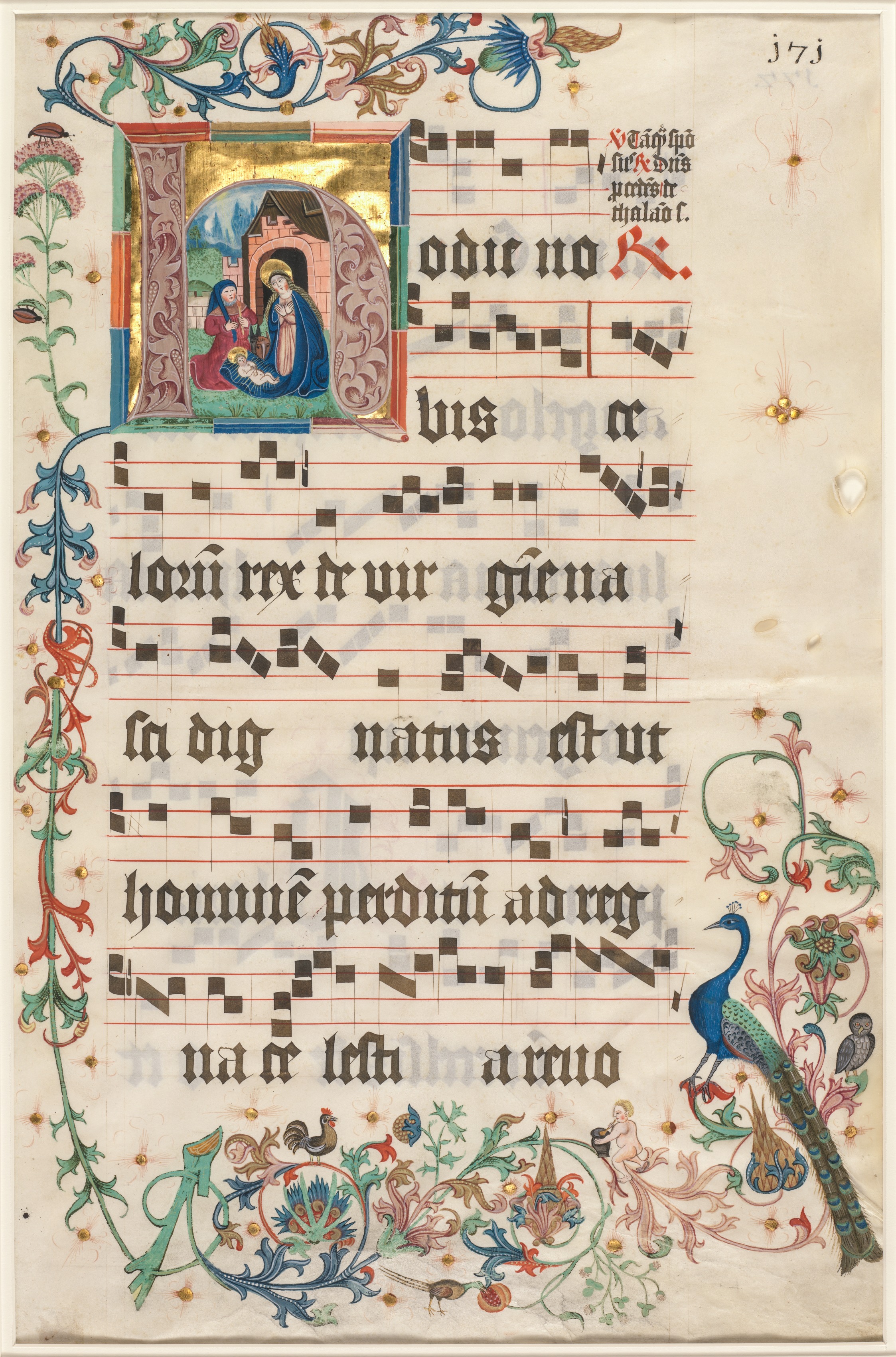The Cleveland Museum of Art
Collection Online as of April 26, 2024

Leaf from an Antiphonary: Initial H with the Nativity (recto)
c. 1480
Leaf: 62.5 x 41 cm (24 5/8 x 16 1/8 in.)
The Jeanne Miles Blackburn Collection 2014.25.a
Location: not on view
Description
The peacock in the lower right margin is used here as a symbol of immortality. In the ancient world the peacock's flesh was thought to be incorruptible—to never decay—and was thus an appropriate symbol for the Virgin Mary who was taken bodily into heaven. The peacock is often used as an accessory illustration for representations of the Nativity. The text for this leaf is the first matins response for Christmas Day and begins Hodie nobis celorum rex (On this day the King of Heaven). The leaf survives with two known sister leaves with text and illustrations that refer to Saint Clare, who was widely venerated during the Middle Ages. She is closely associated with Saint Francis, who installed her with a group of Benedictine nuns in a community at Assisi. Francis prescribed an austere way of life for the nuns who thereafter were known as the Poor Clares. The saint died in 1253 and was canonized in 1255. The prominent references to Clare in the parent manuscript to which this leaf belongs indicate that it was made for a religious community belonging to that order, perhaps in Augsburg or elsewhere in South Germany.- L. V. Randall, Montreal; [Bruce Ferrini, Akron]
- Fliegel, Stephen N. The Jeanne Miles Blackburn Collection of Manuscript Illuminations. Cleveland, Ohio: Cleveland Museum of Art, 1999. Mentioned and Reproduced: p. 81, cat. no. 79 archive.org
- {{cite web|title=Leaf from an Antiphonary: Initial H with the Nativity (recto)|url=false|author=|year=c. 1480|access-date=26 April 2024|publisher=Cleveland Museum of Art}}
Source URL:
https://www.clevelandart.org/art/2014.25.a